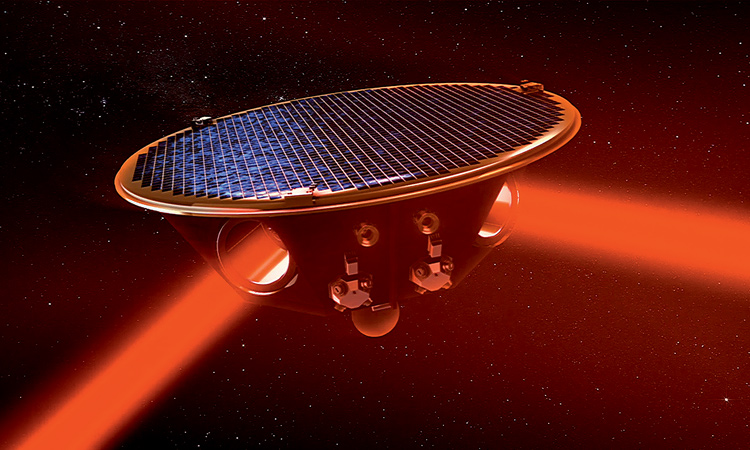Feature
Gravitational Waves: The Road Ahead
LIGO and Virgo have opened up a new window into the local universe. But the global gravitational-wave community isn’t stopping there.
 Artist’s view of one of the satellites of LISA, one of several planned “third-generation” gravitational-wave observatories driven by laser interferometry. [AEI/Milde Marketing/Exozet]
Artist’s view of one of the satellites of LISA, one of several planned “third-generation” gravitational-wave observatories driven by laser interferometry. [AEI/Milde Marketing/Exozet]
It was one of 2017’s big scientific moments. On 16 October, researchers from the Advanced LIGO and Advanced Virgo gravitational-wave (GW) observatories and from an array of astronomical telescopes announced their observation of the collision of two dense neutron stars, 130 million light years away. News of that distant event had first reached Earth in August, in a long rumble of GWs, the low-frequency ripples in spacetime that the giant LIGO and Virgo laser interferometers were built to pick up. After that, the astronomers quickly jumped in, pointing their telescopes—which covered the electromagnetic spectrum from radio waves to gamma rays—at the patch of sky where the GW observatories had told them to look.
…Log in or become a member to view the full text of this article.
This article may be available for purchase via the search at Optica Publishing Group.
Optica Members get the full text of Optics & Photonics News, plus a variety of other member benefits.
